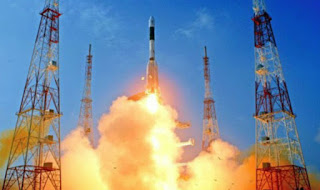India's Manned Space Mission 2021

Great Leap Forward with Satellite Orbit Success Source: ISRO Launch Photo Space Milestone India's communications satellite GSAT-29 now is in a geosynchronous orbit. It was just launched today by ISRO's heavy lift rocket GSLV. It went into orbit 16 minutes after it took flight. It's a milestone for India's mission and ambitions in space. Bringing Advanced Communications to Rural Areas The satellite carries Ka and Ku based high communications transponders and is targeted at meeting the communications needs of people in remote areas of India such as Kashmir, Jammu and the northeastern parts of the country. The satellite has a mission life of ten years. On Target for Manned Missions Today's success has reinforced India's belief they're on track for an unmanned space mission orbit in 2020 and a manned space mission in December 2021.





